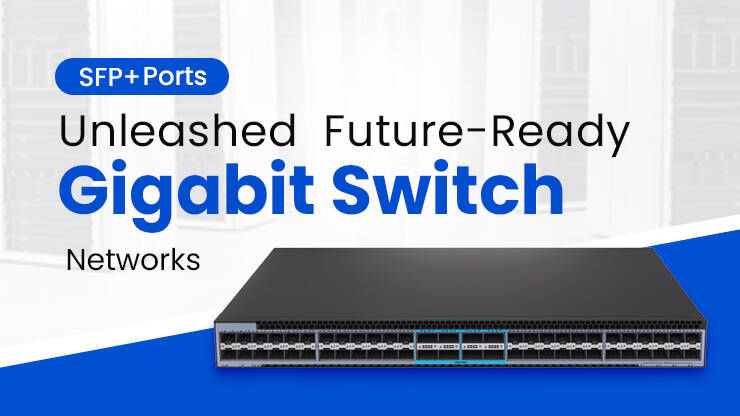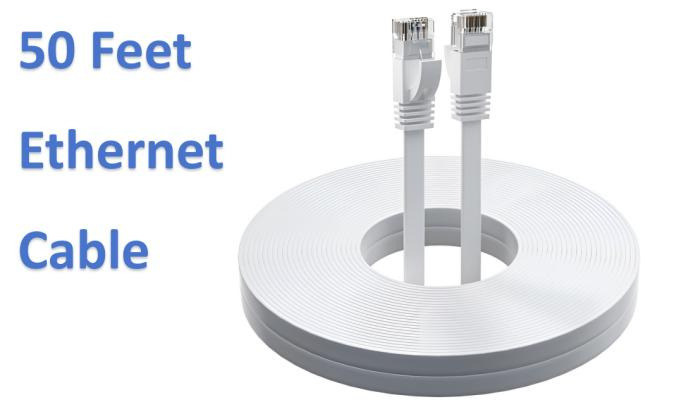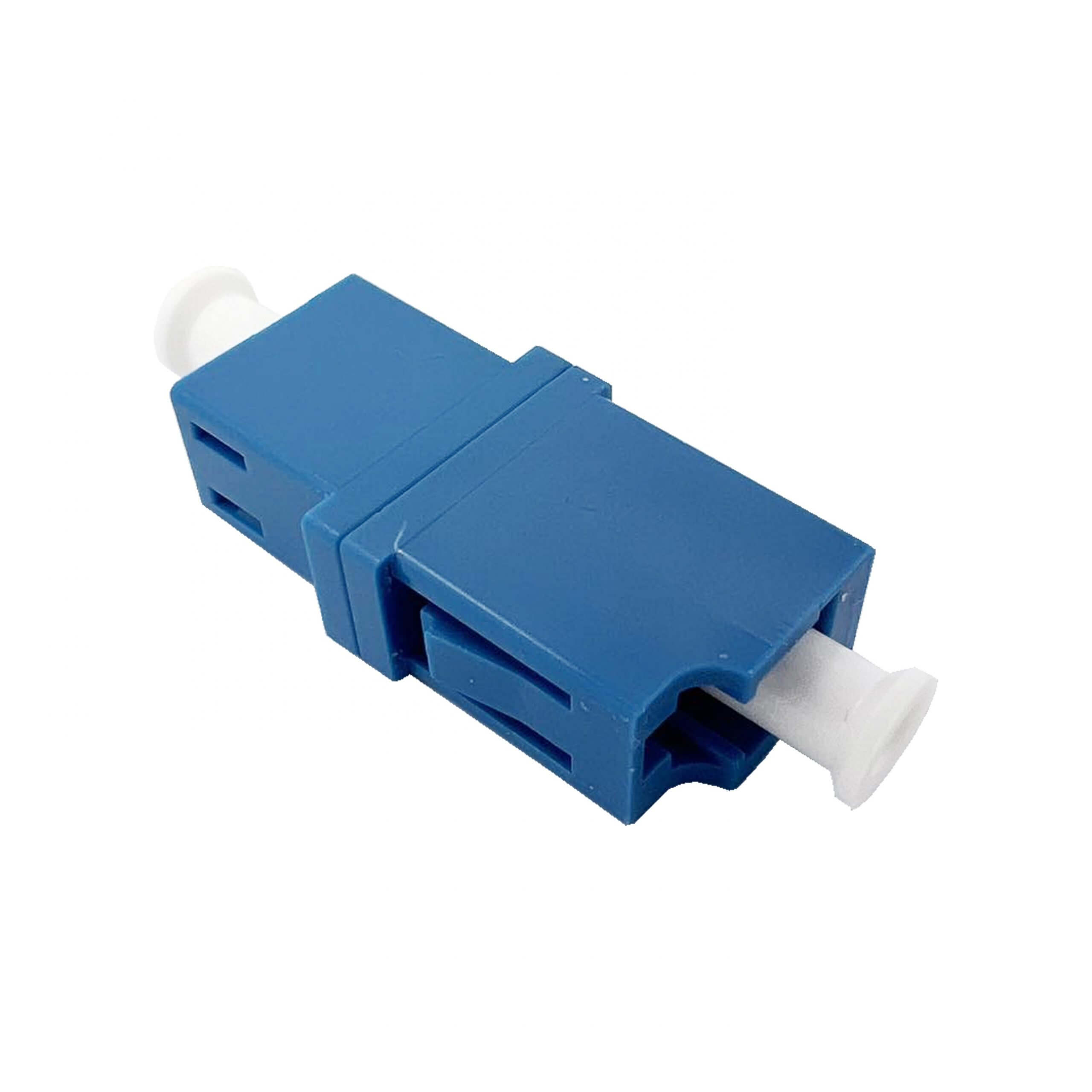Gigabit Switch SFP Port: Functions and Practical Applications Explained
Switch ports are essential interface components that connect network devices for data transmission. Their configuration significantly impacts network scalability and stability, playing a critical role in network communications. Among them, Gigabit Switch SFP port are widely used in various network devices, such as servers, routers, computers, and network interface cards (NICs).
This article will explore:
- What exactly is a Gigabit switch SFP port?
- What are its functions and practical applications?
- How does it differ from an RJ45 port?
What is a Gigabit Switch SFP Port?
A Gigabit switch SFP port is an interface designed for gigabit-speed photoelectric signal conversion. Its primary functions include: signal conversion and high-speed data transmission.
A Gigabit switch SFP port compliance with IEEE 802.3ab standards. Like 1000BASE-T port supporting speeds up to 1000 Mbps. Some SFP ports support 100/1000Mbps auto-sensing, so it is also referred to as a Gigabit fiber port.
What is an SFP Combo Port?
A Combo port (also called a photoelectric multiplexing interface) consists of two Ethernet ports (one optical port (SFP), one electrical port (RJ45) ) on the device panel.
The electrical port (RJ45) and its corresponding optical port (SFP) are logically multiplexed. Users can choose either the SFP or RJ45 interface based on network requirements, but both cannot operate simultaneously.
What is an uplink SFP port?
An uplink SFP port is a special type of port used to connect switches or routers to larger-scale networks. SFP (Small Form-factor Pluggable) is a compact, hot-pluggable transceiver module. The uplink SFP port utilizes SFP interfaces instead of standard Ethernet ports to establish connections between different networks or transmission media.


Introduction to the Functions and Applications of SFP Ports on Gigabit Switches
Functions of SFP Ports on Gigabit Switches
Data Transmission:
The SFP port supports a Gigabit Ethernet transmission rate of 1000 Mbps. Compared to standard RJ45 electrical ports, the SFP port can be paired with different types of SFP optical modules to achieve varying transmission distances, such as 500m (multimode), 20km (single-mode), and 100km (single-mode).
Multiple Transmission Media:
The SFP port supports various transmission media. Depending on the SFP module used, the required medium differs: 1000BASE-SX requires multimode fiber with a transmission distance of up to 550m and 1000BASE-LX requires single-mode fiber with a transmission distance ranging from 2km to 20km.
Hot-Swappable Functionality:
The SFP port supports hot-swappable modules, allowing installation or removal without powering down the switch. This plug-and-play capability enhances network operation and maintenance efficiency.
Long-Distance Transmission:
The transmission distance of an SFP port depends on the type of SFP module used: SFP copper (electrical) modules typically support up to 100m; multimode SFP optical modules can reach up to 550m; single-mode optical modules support distances up to 120km or even farther.
Electromagnetic Interference (EMI) Resistance:
Since most SFP ports use optical modules with fiber optic cables as the transmission medium, they are immune to electromagnetic interference, ensuring stable and reliable data transmission.
Network Expansion and Stacking:
SFP ports are ideal for switch cascading and building network topologies. They support fiber-based stacking, allowing multiple switches to interconnect via SFP ports and function as a single logical device, simplifying unified management.
Digital Diagnostic Monitoring (DDM):
The vast majority of SFP optical modules on the market today support Digital Diagnostic Monitoring (DDM), and all LSOLINK SFP modules are equipped with this feature. DDM enables real-time monitoring of an optical module’s operational status by tracking parameters such as: temperature, voltage, laser bias current, transmit/receive optical power. This functionality allows network administrators to manage modules efficiently, detect potential failures in advance, and enhance overall network reliability.
Application Guide for Gigabit Switch SFP Ports
Enterprise Office Networks:
For stable network connections between different floors of an office building or adjacent structures, single-mode fiber SFP modules (1000BASE-LX, 2km-20km) are ideal for long-distance transmission. A typical configuration involves: core switch (SFP) ← fiber → access layer switch (SFP).
For areas requiring physically isolated networks (e.g., finance departments, R&D centers), single-fiber bidirectional SFP modules (1000BASE-BX) can be deployed. This solution not only conserves fiber resources but also ensures enhanced security, since fiber optic transmissions are immune to electromagnetic eavesdropping, offering far greater protection than copper cables.
Industrial environment application:
In factory automation networks with strong electromagnetic interference (EMI), vibration, and dust, industrial-grade SFP modules are recommended. These modules support an extended operating temperature range of -40°C to 85°C, while fiber optics ensure complete immunity to EMI/RFI interference.
For outdoor deployments with large temperature variations—such as campuses, oil fields, mines, forests, and reservoirs, single-mode SFP+ fiber transceivers enable long-distance monitoring device connectivity with transmission over 5km. Additionally, PoE (Power over Ethernet) injectors can power remote cameras while providing network connectivity.
Telecom Carrier Deployments:
In broadband access networks, OLT equipment utilizes SFP ports to connect with optical splitters, where a single SFP port can support a 1:32 split ratio, enabling efficient fiber-to-the-home (FTTH) distribution.
Specialized Application Scenarios:
SFP is now also used in the basic network of medical care, such as the network connection of consultation islands, departments and examination rooms. Medical image transmission now all uses optical modules with higher rates. The SFP optical fiber module ensures zero packet loss in the PACS system transmission and avoids electromagnetic interference from medical equipment. In the financial transaction network, low-latency SFP optical modules are used to directly connect through optical fibers to reduce the number of network hops and achieve a stable connection with microsecond-level latency.
SFP Ports vs. RJ45 Ports on Gigabit Switches
What are the specific differences between port SFP and RJ45 ports on gigabit switches? The following comparison will analyze their distinctions in terms of transmission medium, transmission distance, transmission rate, flexibility, cost, and interference resistance.
Transmission Medium
SFP Ports:
Fiber Optic Medium:
Single-mode fiber (SMF): 9μm core diameter, transmission distance of 5km–120km (paired with single-mode optical modules). Multimode fiber (MMF): 50/62.5μm core diameter, transmission distance ≤550m (paired with multimode modules).
Copper Cable Medium:
Supports 1000BASE-T SFP copper modules, compatible with Cat5e/Cat6 cables, transmission distance up to 100m.
RJ45 Ports:
Copper Cable Medium:
Standard RJ45 interface, requires twisted-pair cables (Cat5e/Cat6, etc.), transmission distance limited to 100m. It cannot directly connect to fiber optics, requires external media converters for fiber connectivity.
Transmission Distance
SFP Ports:
Multimode fiber (MMF) – 850nm wavelength: supports up to 550 meters (using OM3/OM4 fiber). Single-mode fiber (SMF) – 1310nm/1550nm wavelength: supports 10km to 80km transmission.
Cables:
Passive DAC: up to 7 meters;
Active DAC: up to 15 meters;
AOC (Active Optical Cable): supports up to 150 meters.
Gigabit RJ45 Ports:
Medium Type: uses twisted-pair cables (Cat5e/Cat6/Cat6a, etc.) with a 100-meter transmission distance, compliant with IEEE 802.3ab Gigabit Ethernet standards. While Cat6 cables can support 10Gbps (10 Gigabit) speeds at short distances (≤55 meters), they remain limited to 100 meters in Gigabit mode. Exceeding 100 meters may cause signal degradation, requiring repeaters or additional switches for extension.
Flexibility
The SFP network port features a modular design that allows flexible interchange between optical/copper modules, supporting hot-swapping for easy network expansion and maintenance. This makes it ideal for hybrid-media networks (e.g., some ports using fiber, others copper). In contrast, RJ45 ports are fixed to copper medium and Ethernet-only, offering significantly lower flexibility.
Cost
SFP Ports: Higher initial cost (requires separate SFP modules) and slightly pricier fiber cabling, but more economical long-term due to fiber’s extended lifespan. Upgrades only require module replacement, not full hardware overhaul.
RJ45 Ports: lower upfront cost, but thicker copper cables complicate cable management.
Interference Resistance
SFP fiber ports provide complete immunity to electromagnetic interference (EMI) and radio frequency interference (RFI). In contrast, RJ45 copper ports are susceptible to interference (e.g., from power lines or motors). While shielded twisted-pair (STP) cables can mitigate this issue, they cannot eliminate interference entirely.
Gigabit Switch SFP Port FAQ
Q: What is the maximum transmission distance of an SFP port?
A: Multimode Fiber (1000BASE-SX): Up to 550 meters;
Single-mode Fiber (1000BASE-LX): 2-20 kilometers;
Long-haul Single-mode (1000BASE-ZX): 80-120 kilometers.
Q: Can a gigabit switch SFP port support 10G (10 Gigabit) transmission?
A: Standard Gigabit SFP ports only support 1Gbps and cannot natively handle 10G. However, with advancements in switch technology, most modern SFP port switches now include some SFP+ ports. SFP+ ports paired with SFP+ optical modules can achieve 10Gbps speeds.
Q: Why isn’t the port LED lighting up after inserting an SFP module?
A: On the one hand, SFP module may not be compatible with the switch brand. We should ensure the module is certified or compatible with your switch model.
On the other hand,fiber connection is wrong.We should check if the fiber cable is properly inserted. If the connection appears secure, verify the Rx (receive) optical power of the module. The received power should typically be within -8dBm to -25dBm for stable operation.
And on some switches, switch SFP ports may be disabled by default. We should access the switch’s management interface (CLI or web GUI) and enable the port (e.g., using the no shutdown command on Cisco switches).
If all else fails, the SFP module itself may be damaged. Try replacing it with a known-working module to confirm.
Q: How to determine if an SFP module is single-mode or multi-mode?
A: There are two ways to determine whether SFP is single-mode or multi-mode: check module labeling and inspect fiber type.
Check module labeling: for single-mode (SMF), you can look for “LX”, “ZX”, or “LH” markings, operates at 1310nm or 1550nm wavelengths with transmission distances >2km. For multi-mode (MMF), the module labeled “SX”, uses 850nm wavelength, typically limited to ≤550m.
Inspect fiber type: single-mode fiber is yellow jacket, 9µm core. Multi-mode fiber is orange/aqua jacket, 50µm or 62.5µm core.
Q: Why is the fiber SFP connection rate unstable?
A: Excessive optical attenuation: use an optical power meter to verify received power falls within the module’s specified range.
Over-bent fiber: maintain minimum 30mm bend radius for fiber cables.
Contaminated interfaces: clean fiber connectors and SFP ports with lint-free swabs + alcohol.
Single-mode/multi-mode mismatch: ensure end-to-end consistency (SMF-SMF or MMF-MMF).
Conclusion
SFP ports empower gigabit switches to interconnect via diverse fiber and Ethernet cables, extending network-wide switching capabilities. As the “universal interface” of modern network architectures, their value lies not only in addressing current connectivity needs but also in providing enduring technical flexibility for network evolution.








